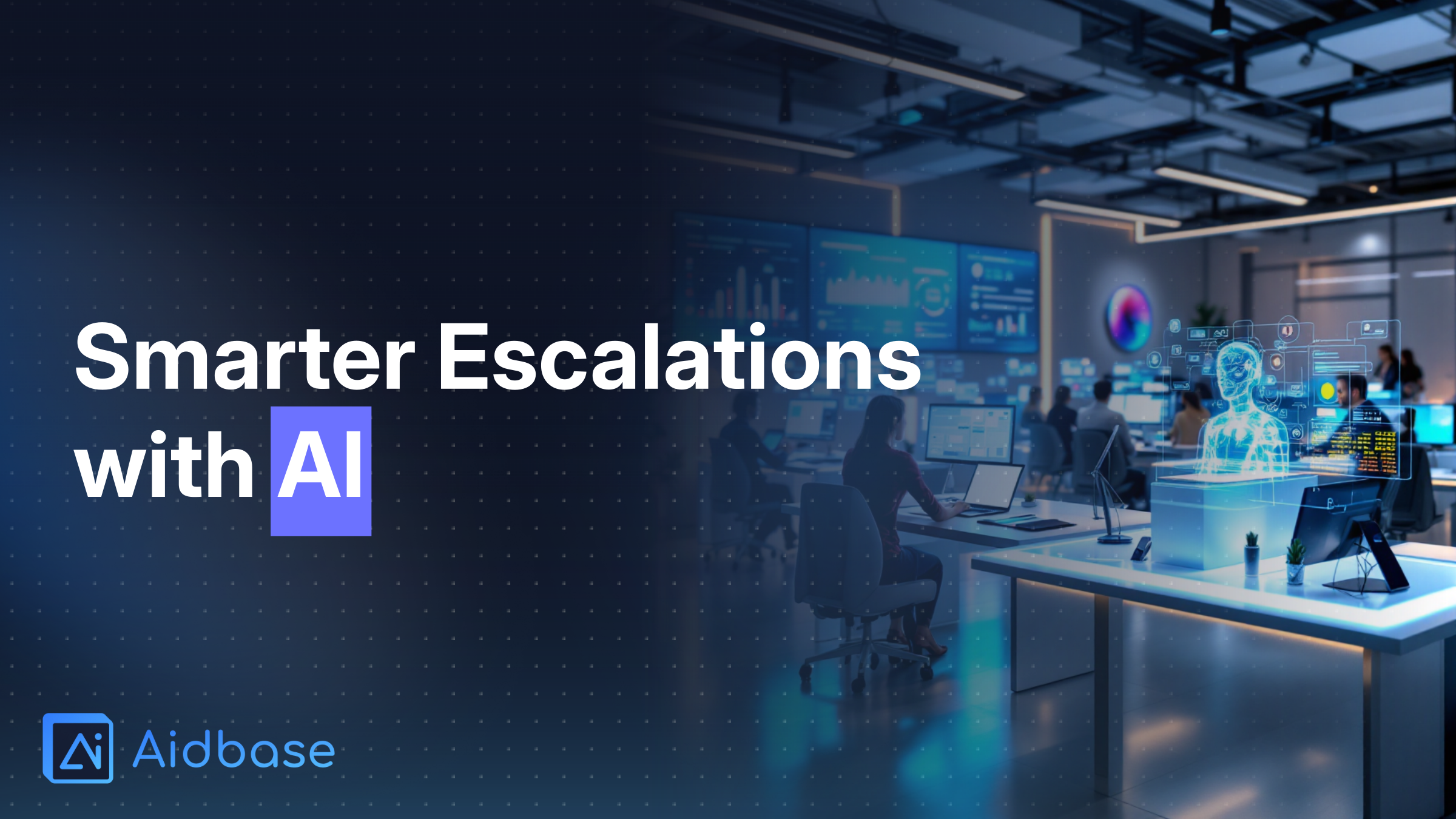In the fast-paced world of customer support, seamless handoffs between supp...

In today’s fast-paced customer support landscape, smooth handoffs between support tiers are crucial. When agents seamlessly pass context from Tier-2 to Tier-3, miscommunication is minimized, issue resolution accelerates, and customer satisfaction soars. Let’s dive into how AI is making these transitions smarter and more effective.
Smooth handoffs are the backbone of efficient customer support operations. When a support issue escalates from Tier-2 to Tier-3, maintaining context is critical. Without a clear and complete transfer of information, the receiving team may have to retrace steps, leading to frustrated customers and wasted resources.
Key benefits of smooth handoffs include:
These benefits are amplified by introducing AI mechanisms that automate context delivery, ensuring that every handoff is efficient and informative.
Tier-2 and Tier-3 support teams handle a broad range of technical issues. While Tier-2 often deals with intended problem-solving and diagnostic tasks, Tier-3 handles intricate, specialized challenges that require deeper technical expertise. AI-powered tools can be integrated into both levels:
Tier-2 Automation: Automated diagnostic tools help identify issues quickly, letting agents resolve tickets faster. According to research on IT support tiers, this automation reduces workload and speeds up resolution (extnoc.com).
Tier-3 Automation: Advanced systems are leveraged for diagnosing complex technical challenges, proactive monitoring, and early issue detection. As these systems work hand in hand with human experts, the transition is smoother and more data-rich.
Highlighting the vital links between AI automation and efficient support helps to ensure that each handoff is backed by all the necessary context and diagnostic data.
AI’s ability to embed context into support handoffs significantly reduces the chances of miscommunication. With trigger-based and agent-assisted handoffs, AI systems step in right when human expertise is needed. For instance, when an automated system encounters a scenario beyond its capacity, it escalates the issue to a human agent with all relevant historical data attached (thinkstack.ai).
Other ways AI enhances handoffs include:
Integrating AI in this way not only supports the technical handoff but also fosters a smooth experience that benefits both the support teams and the customer.
Summarizing chat histories is a key function where AI shines. In support teams, countless interactions occur daily, and manually sifting through them can be laborious. AI-driven summaries highlight the most important details, allowing support professionals to quickly understand the problem history and customer sentiments. By automating this process, companies save time and reduce errors.
Conducting sentiment analysis is equally impactful. AI models can detect if a customer's tone is frustrated or appreciative, which influences the subsequent approach. A deeper contextual understanding helps in:
Together, summarizing chat history and analyzing sentiment elevate the quality of the support handoff by ensuring that no critical emotional cues are overlooked.
Machine learning models play a transformative role by predicting the likelihood of escalations. By analyzing patterns in data from previous support interactions, these models forecast which issues might require Tier-3 intervention. This proactive approach means that support teams can prioritize cases likely to be escalated and begin to gather essential context even before a handoff occurs.
Benefits of using predictive models include:
Integrating such predictive analytics into existing workflows, perhaps through smart tools like Aidbase, further refines the support handoff by ensuring that every escalation is well-anticipated and managed.
Creating standardized workflow templates is an effective way to ensure that every AI-to-human communication carries the necessary context. These templates can be designed to include key details such as:
Workflow templates help maintain consistency across interactions. They ensure that important data is not lost in transmission and that human agents working on escalations are never starting from scratch. This systematic approach ultimately leads to a more informed and efficient support process.
Real-world case studies underscore the benefits of incorporating AI into escalation processes. For instance:
These examples demonstrate that smarter handoffs powered by AI are not only theoretically beneficial but also deliver tangible, measurable improvements in real-world settings.
AI is revolutionizing the way support teams operate by embedding critical context into every escalation. From summarizing chat histories and analyzing sentiment to predicting the need for escalation and organizing workflow templates, AI is streamlining internal support processes like never before. The transition from Tier-2 to Tier-3 becomes not a bottleneck, but a well-oiled process that drives improved outcomes, faster resolutions, and higher customer satisfaction.
By starting to integrate these advanced AI strategies into your support processes, you can ensure a smarter, more efficient escalation process. Embrace these technologies and witness a transformative improvement in your support workflow—you might just find that the future of internal support is leaning on the innovative capabilities of AI.